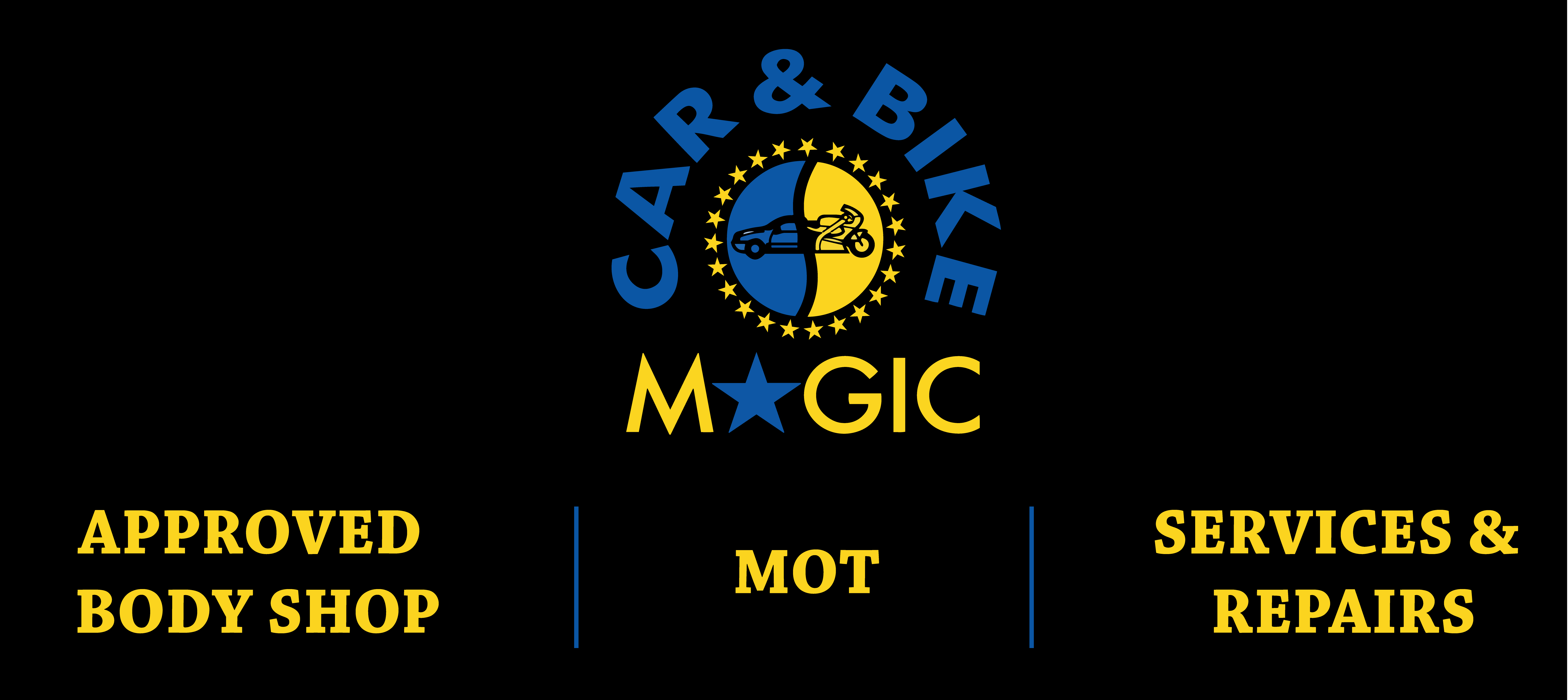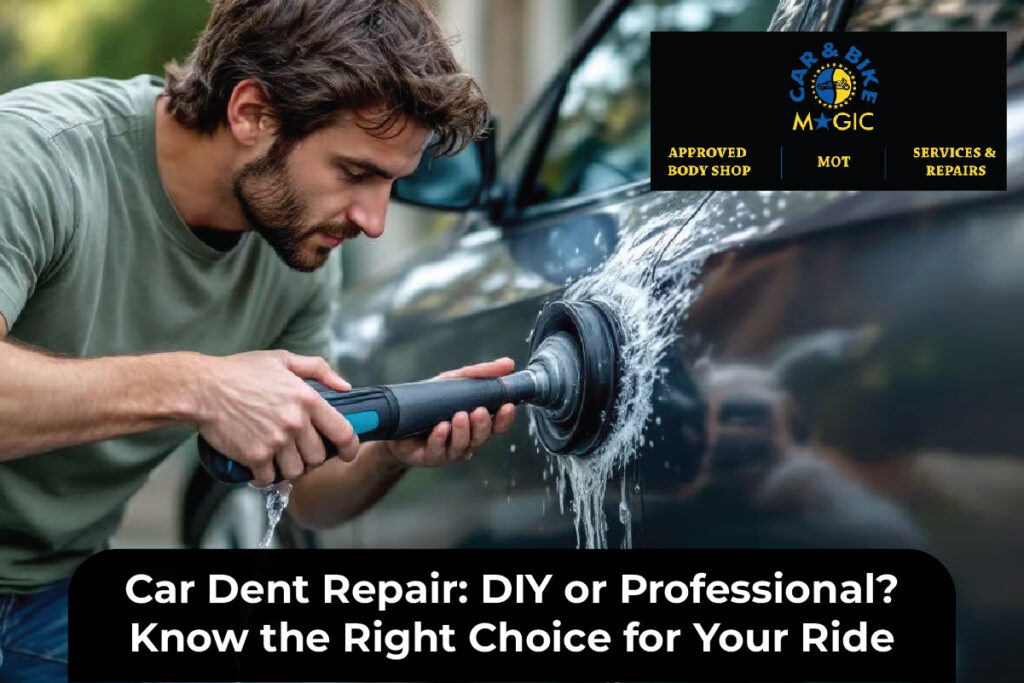It happens to the best of us—you return to your parked car only to spot a dent that wasn’t there before. Maybe it’s a minor ding from a runaway shopping cart or a more noticeable crease from someone opening their door too wide. Either way, it’s frustrating. Now the big question is: should you try to fix it yourself or call a pro?
Choosing between DIY and professional car dent repair depends on the dent’s size, location, your tools, and how much risk you’re willing to take. While the internet is full of DIY hacks, not all of them work—or are safe. This guide breaks it all down, so you know when to roll up your sleeves and when to call the experts.
What Is Paintless Dent Repair and How Does It Work?
Before comparing DIY and professional options, it’s important to understand paintless dent removal (also called PDR). This method is widely used today because it fixes dents without affecting your car’s paint job.
Paintless dent repair involves:
- Gently massaging the metal back into place from behind the panel.
- Using special dent removal tools like rods and glue pullers.
- Avoiding the need for sanding, filling, or repainting.
PDR is best for smaller dents where the paint isn’t chipped. It keeps your car looking original and is usually faster and cheaper than traditional repairs.
You can learn more about professional PDR services here: Paintless Dent Removal Services in Sunderland
Pros and Cons of DIY Car Dent Repair
If you’re the handy type and like to take things into your own hands, DIY car dent repair might seem appealing. It’s cheaper and you can do it on your own time—but it does come with a few warnings.
Pros of DIY:
- Budget-friendly (especially for small dings).
- Convenient—you don’t need to visit a shop.
- Tons of tutorials and kits available online.
Cons of DIY:
- Easy to make the dent worse.
- You might damage the paint or stretch the metal.
- Tools can be expensive and hard to use correctly.
DIY is really best for tiny dents in easy-to-reach places, like flat doors or fenders. But when it comes to deeper dents or anything near an edge or body line? You might want to think twice.
When DIY Dent Repair Can Actually Work
Some minor dents are perfect candidates for a do-it-yourself fix. If you’re thinking of giving it a shot, here’s what to look for.
Ideal DIY conditions:
- The dent is smaller than a golf ball.
- There’s no paint damage or cracking.
- The metal hasn’t creased or folded.
- The dent is located in a flat, accessible area.
You’ll need the right dent removal tools—and a lot of patience. Some common tools include suction cups, glue-pulling kits, and hair dryers combined with compressed air (yes, that’s a thing). Just be sure to research thoroughly and test gently before going all-in.
Still unsure? Car & Bike Magic’s blog has insights that can help you make that final call.
What to Expect from Professional Dent Repair
Professionals have been doing car dent removal for years, and they’ve got the tools and training to make dents disappear like magic—without the trial and error.
Benefits of going pro:
- Flawless results—no bumps, cracks, or missed spots.
- Paint warranty usually remains intact.
- Experts know how to handle tricky spots.
- Faster turnaround and less hassle for you.
If your dent is larger, more complex, or near important features like sensors or door seams, trust a technician. Professionals also offer mobile dent removal services, which means they come to you—saving even more time and effort.
Looking for expert help in the UK? Try Car and Bike Magic for reliable, certified dent repair.
Risks of DIY That No One Tells You About
Here’s what DIY YouTube videos won’t show you: the risks.
What can go wrong:
- Cracked paint that now needs full-body work
- Metal stretched beyond repair
- Over-pulling that creates a “high spot”
- Worsening the dent (yes, it happens more than you think)
Even with a paintless dent repair kit, one wrong move can turn a quick fix into a costly mistake. So weigh the risks before diving in.
Choosing the Right Dent Repair Shop
If you’ve decided to go the professional route, choosing the right shop is crucial. A good dent repair provider should offer honest pricing, quality service, and convenient options.
What to look for:
- Experience with paintless dent removal
- Clear estimates with no surprise fees
- Positive customer reviews and before/after photos
- Options for mobile dent removal services
Need a recommendation? Check out Car and Bike Magic for high-quality dent repair near you. They’ve got the skills, tools, and service to make your car look brand new again.
Final Thoughts: When to DIY and When to Call the Pros
Fixing a dent yourself can be a quick win—if you know what you’re doing and the dent is minor. But when the damage is more serious, or if you want perfect results without the stress, calling a professional is the way to go.
Car dent repair isn’t just about appearance. It’s about preserving your car’s value and avoiding long-term issues like rust or chipped paint. Whether you choose DIY or professional help, make sure you understand the scope, risks, and tools involved.
Still on the fence? Head over to Car and Bike Magic for more advice, service options, and expert dent repair near you.
FAQs: Car Dent Repair and What You Should Know
Q1: Can I fix a dent myself at home?
Yes, small dents can sometimes be fixed with suction tools or glue pullers. But larger or complex dents are best left to the pros.
Q2: Does paintless dent repair really work?
Absolutely. Paintless dent repair is effective for dents without paint damage and can restore your car’s shape without repainting.
Q3: How long does professional dent removal take?
Most minor dents can be repaired in 1–2 hours. Complex jobs may take a full day, especially if multiple panels are involved.
Q4: Is mobile dent removal worth it?
Yes! It saves you time and lets you get repairs done at home or work. Just make sure your area is accessible and has enough light.
Q5: Will insurance cover my dent repair?
It depends on your policy. Cosmetic-only dents may not be covered unless part of a claim. Always check with your insurer first.

